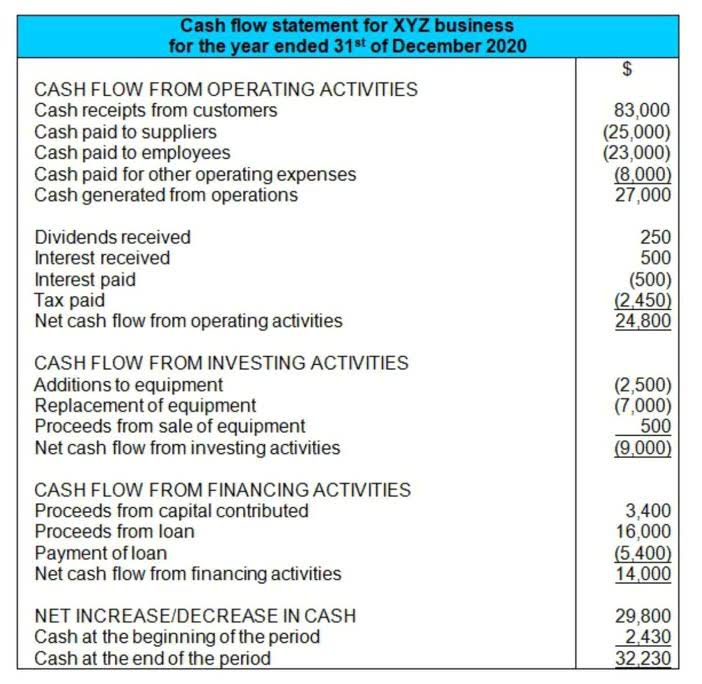
Ideally, ROS should either stay stable or increase as a business grows. If it shrinks as revenues increase, the company might be spending too much to try and grow, and if it shrinks with stagnant revenue, it’s becoming less efficient with time. This metric reveals your operational efficiency, helping you maximize profits and identify wasteful spending. As I mentioned before, if a customer pays you an amount for shipping, it’s considered revenue (or income) for your biz. It does not matter whether the shipping amount is stated separately at checkout in your listing or lumped in with your total price. To properly assess your business’s financial does gross sales include shipping situation, you need both numbers.

What is the difference between gross and net sales?

Setting goals can inspire Grocery Store Accounting your team to work aggressively to achieve them, maximizing business growth. When you dig a bit deeper, you find that 10 units of Product A were given a discount of 25% off because of early payment, which you will use to calculate your net sales. Maybe you sold 50 units of Product A and 75 units of Product B. Product A costs $299 and Product B costs $199.
- Even if the order ended up being refunded or there were shipping and other fees (that made up that $80), the gross sales is still $80.
- If net sales are the only metric that gives an accurate picture of your company’s profit, why do you need to track gross sales?
- If this post got the money-side of your brain in gear, you might enjoy honing your skills even more with our free e-book all about setting up a biz bank account and bookkeeping system for your shop.
- Learn new skills, connect with peers, and grow your career with thousands of sales professionals from around the world.
- It doesn’t matter if they’re equal, or if your customer pays you more or less than what you actually end up paying UPS/USPS/FedEx, etc.
- For retail businesses that charge sales tax, the price paid by the consumer includes the unit price of the product together with applicable sales tax – both state and local.
Freight and Shipping: COGS or Expense?
This separation helps analyze business performance and manage costs effectively. However, some businesses exclude shipping fees from gross sales when these fees are treated as pass-through costs. In such cases, the company acts as an agent, facilitating the shipping service rather than providing it directly. The Financial Accounting Standards Board (FASB) advises that when a company acts as an agent, only the net amount retained from the transaction is recognized as revenue. Under Generally Accepted Accounting Principles (GAAP) in the United States, shipping fees that are a mandatory part of the sales contract are typically included in gross sales. These fees are considered integral to the transaction, contributing to the total revenue generated.
Documentation on Financial Statements

Taking advantage of sales automation could help you cut back on the cost per closed deal, and enhance your sales growth rate which would be a positive indicator to go with improving ROS. All types of healthcare services are impacted by compliance requirements, workforce shortages, and rising labor costs, plus insurance reimbursements. But they differ because these expenditures can be made up for with operational efficiencies like specialization, which means reduced foot traffic and less variety of staff, equipment, and supplies. Things get more tricky if you have a big supply order of all sorts of different items. In this case, you will need to take the total shipping paid and divide it up amongst all the different supply items. On a tangential issue, adding shipping to the selling price to offer free shipping produces a higher GPM, which is also misleading to reader of said financials.
Why is return on sales important?

Distribution costs, such as transporting goods from warehouses to retail locations or directly to consumers, are not included in COGS. These expenses are categorized as operating expenses because they are not directly tied to production or acquisition. For example, a company distributing products to retail stores records these transportation costs as operating expenses.
The inclusion or exclusion of shipping fees in gross sales calculations can have significant tax implications. When shipping fees are included, they may increase the overall revenue reported on tax filings, potentially affecting taxable income and resulting in higher tax liabilities. Businesses must weigh whether the additional tax burden outweighs the benefits of including shipping fees in gross sales. This approach aligns with the accounting concept of agency, where revenue is recognized only to the extent of the fee or commission earned. This distinction is vital for accurate financial reporting and adheres to standards such as International Financial Reporting Standards (IFRS) and relevant sections of the Internal Revenue Code.
- Net weight represents the weight of the product itself, tare weight refers to the weight of the packaging, and gross weight is the total weight of everything combined.
- When shipping fees are included, they may increase the overall revenue reported on tax filings, potentially affecting taxable income and resulting in higher tax liabilities.
- The reason for this rule is that basically companies have the ability to offer “free shipping” and bake this cost into their top line anyway or charge for it separately.
- For example, gross revenue reporting does not include the cost of goods sold (COGS) or any other deductions—it looks only at the money earned from sales.
- The gross sales formula is calculated by totaling all sale invoices or related revenue transactions.
- To help you through this dilemma, we’ll discuss gross sales thoroughly and tell you its definition, how to calculate it, and the difference between gross sales and net sales.
In other words, the number represents a company’s raw, unfiltered income. In some jurisdictions, shipping fees may be taxable if considered part of the sale. For instance, in California, shipping and handling charges that are not separately stated from the sales price may be subject to sales tax. Businesses must comply with the specific sales tax regulations in the states where they operate to avoid audits or fines.

While gross sales refer to the revenue generated by a company, gross sales volume is the number of products sold to generate this number. Gross sales represent a monetary amount, while gross sales volume represents a number of items. You can’t figure out your company’s net sales without tracking its gross sales first. For instance, your gross sales won’t tell you much about profitability because they don’t include deductions. A company can make an impressive number of total sales, but it doesn’t reflect how well it handles costs and how much it gains in profit. First and foremost, you learn how much total revenue your company can generate in a limited period of time, which helps you What is bookkeeping track its overall performance and expect periods of slow sales.
Typically there is an expense account in the Cost of Sales section of your Profit and Loss Statement for shipping and it is used in this situation. Many businesses use KPIs to track progress and achieve their goals, but what makes a great KPI, and how can you create ones that drive real success? Learn how to create an effective sales commission structure that motivates your team and boosts revenue with our step-by-step guide. You should evaluate the error in the prior financial statements as well. We’ll examine only a few of their self-proclaimed best sellers in this case study.
